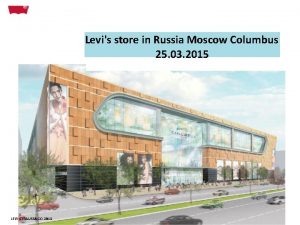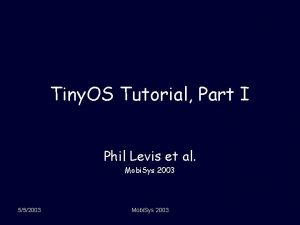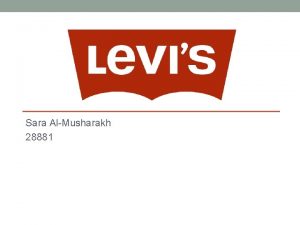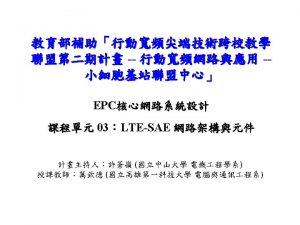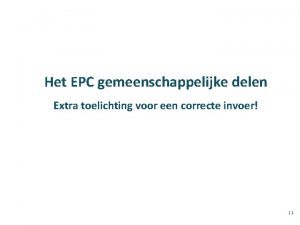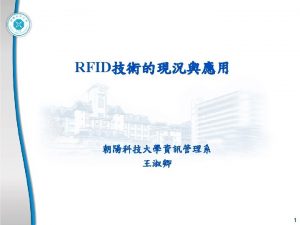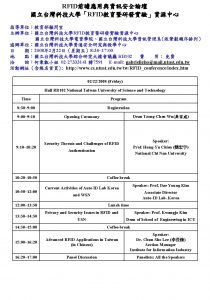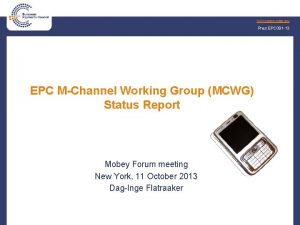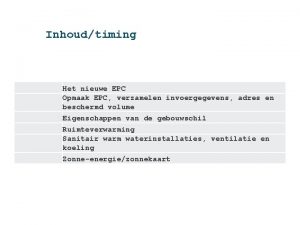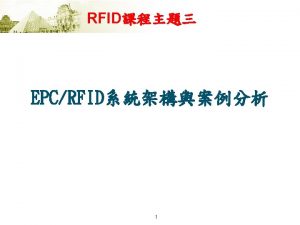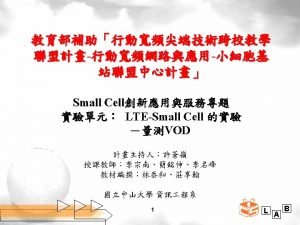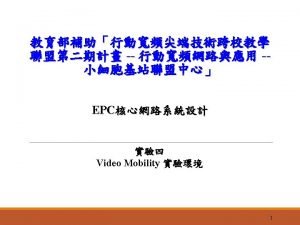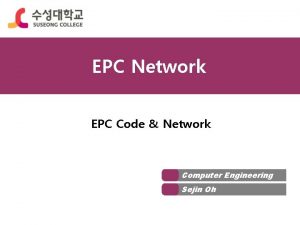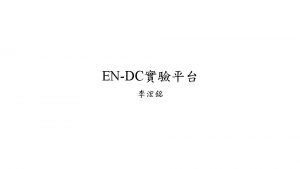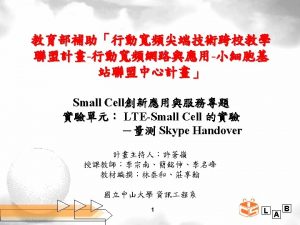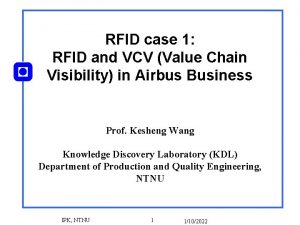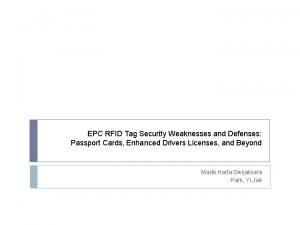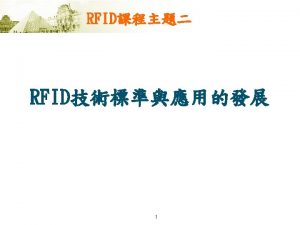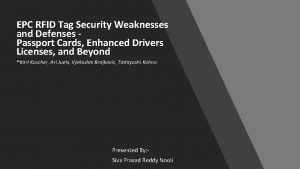GS 1 Mxico Levis Study Case EPC RFID





















- Slides: 21

GS 1 México Levi´s Study Case EPC / RFID Implementation

Agenda 1. Levi´s • 1. 1 Company Profile 2. Business Need • 2. 1 Background • 2. 2 Issues Identification 3. Scope / Pilot • 3. 1 Origin • 3. 2 Scope • 3. 3 Timeline 4. Solution • 4. 1 Implementation of EPC / RFID • 4. 2 Benefits

1. Levi´s

1. 1 Company Profile • Multinational manufacturer known as the inventor of the first pair of jeans. • They have 2 sub-brands: Dockers and Denizen. • Levi´s employees up to 5, 000 employers in over 110 countries.

2. Business Need

2. 1 Background “We manufacture the merchandise within our 50 distribution centers, which turns the work difficult, and exhausting to keep an eye of every single product through the whole supply chain”.

2. 2 Issues Found I • 20% discrepancy between the physical inventory and the levels reported in system. II III • Lack of detail such as color & Inventory sizes. Lack of Informatio n • Inventory supplies in stores of over 4 months. • IV II. III. Sales don´t match the Supply expectations of high inventor levels. IV. Financial

3. Scope/Pilot

3. 1 Origin of the Pilot • On 2005, Levi´s made up its decision to implement the RFID / EPC technology into one store so they could pilot it. After 6 months, they found out that the results exceeded the primal objectives. 6 Months 2005 Pilot´s Kick Off 40% reduction in out of stocks items. 2006 Extended the pilot in 2 more stores.

3. 2 Scope Financial I. Reduce inventory levels to, at most, 2 months. II. Reduce the % of out-of-stocks items. III. Increase sales. IV. Accurately manage replenishment automatically generated with EPC / RFID tech. Operative s I. Fully integrate EPC/RFID technology into the DC operation. II. Implement EPC/RFID technology-based operations in stores: goods-in, sales, returns, exchanges and inventory management.

3. 3 Timeline 2010 2007 -2009 2006 2005 - Pilot Start - Pilot extension to 10 additional stores. Implementation in remaining stores. - 100% of stores use EPC/RFID technology.

4 EPC / RFID Implementation

Once it´s known that the benefits are out there, Levi´s decided to gradually integrate the RFID solution into the remaining stores.

First, the Distribution Center receives the PO, based on the results brought automatically by the store, asking just for what they really need to be stocked. • Every single pair of jeans, has its own SRFID!

Secondly, in order to validate the shipping; a web portal was previosly created to verify and scan such things like weight, net content and the Serial Number.

The POS receives the Advance Shipping Notice before the arrival of the merchandise. Once the items have arrived, a mobile RFID device validate the information avoing to open the boxes to check out what´s inside. The information matches automatically with the POS data and updates the inventory.

Finally, as a consumer experience and a Marketing strategy; they set up a new device to help the customers to fully interact with the store. An Intelligent Mirror allowing them to pick up a garment and see through the reflection how it would fit in it and how it looks in different colors.

4. 1 EPC / RFID Implementation

-Increased by 11% - Improved availability of products. -Enhaced consumer buying experience. -Reduced transport costs, typically qualified as “wait times”. -Increased efficiencies in DCs -Optimised logistics operations, achieved by distribution to a higher number of stores per day. Sales Financi al -Reduced lost sales by 40% due to reduction in out-ofstocks merchandise. -Reduced inventory in stores from 4 to a 2 months supply. -Improved inventory accuracy to 99% -Removal of innactive Store Invento products. ry -Provided more complete and detailed inventory view. -Increased efficiency via fulled automated Repleni replenishment -Improved ability to verify in the accuracy of work in Stores warehouse. -Increased hours of operation and opportunities for more sales through the elimination of store closings for inventory and replenishment. Benefit s Out-Of. Stock 4. 2 Benefits

“Technology as an enabler, on its own, doesn’t really do anything. You must effectively integrate RFID into a store’s operations for it to be useful” Abel García, Director of IT, Levi´s Latin America

Thank you
 Mxico mapa
Mxico mapa American apparel rfid case study
American apparel rfid case study Best case worst case average case
Best case worst case average case Fbi virtual case file case study
Fbi virtual case file case study Tempi chirurgici esofagectomia
Tempi chirurgici esofagectomia Levis ph
Levis ph Levis moscow t shirt
Levis moscow t shirt Levis tainted love
Levis tainted love Phil levis
Phil levis Contoh culpa levis
Contoh culpa levis Contoh culpa lata
Contoh culpa lata Levis competitive advantage
Levis competitive advantage Sara levis
Sara levis Sae epc
Sae epc Epc voorbereiden
Epc voorbereiden Grade metálica dobrável
Grade metálica dobrável Bu epc
Bu epc Event driven process chain
Event driven process chain Epc contract advantages and disadvantages
Epc contract advantages and disadvantages Epc pre-check
Epc pre-check Slide formazione generale lavoratori
Slide formazione generale lavoratori Crepc2
Crepc2






